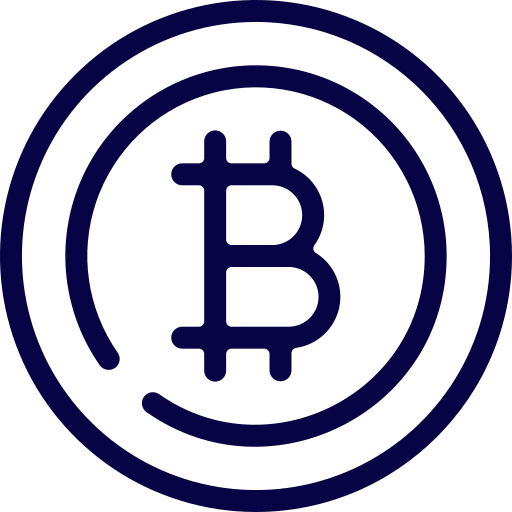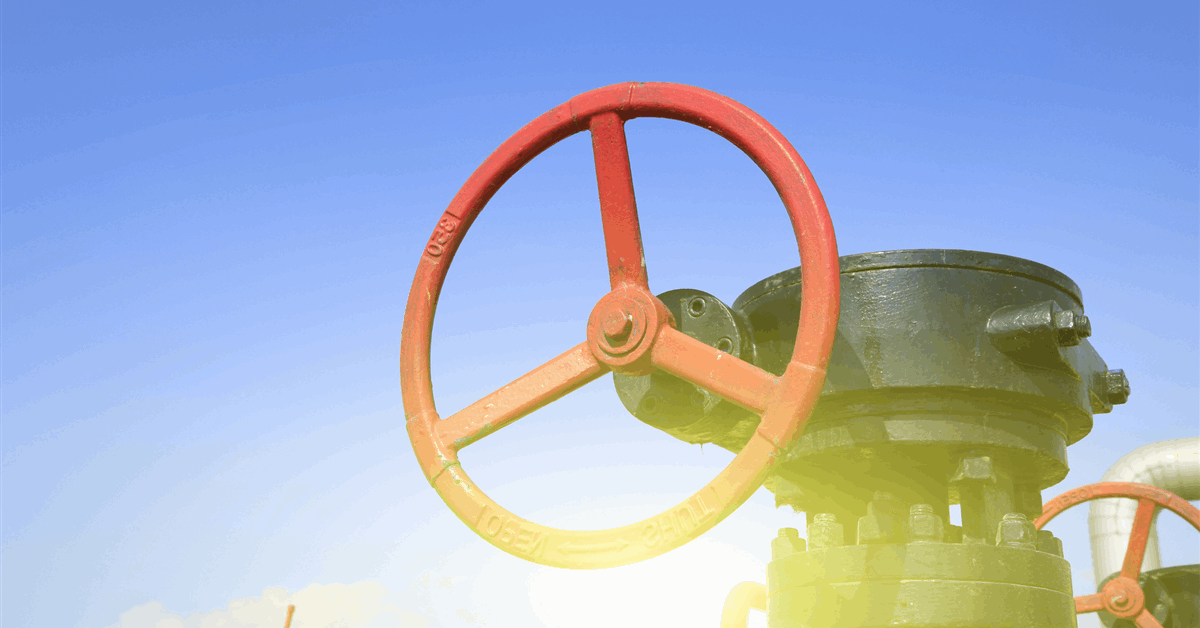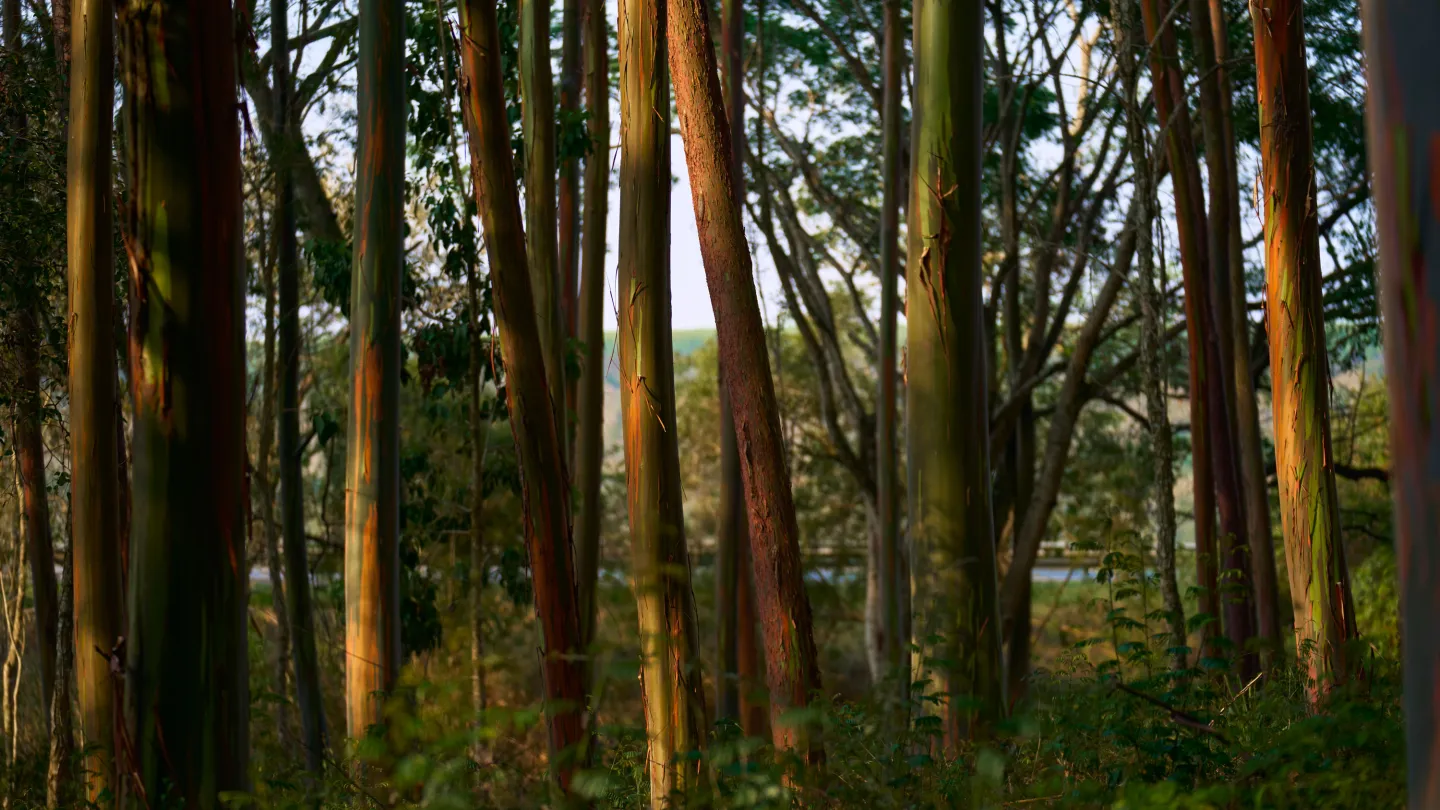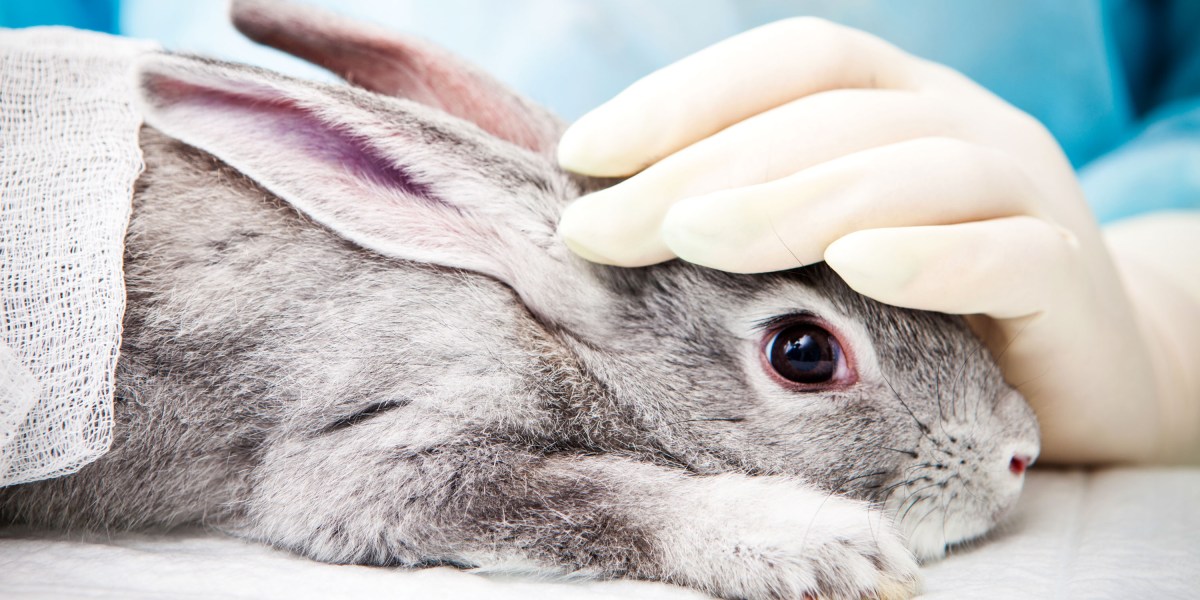Your Gateway to Power, Energy, Datacenters, Bitcoin and AI
Dive into the latest industry updates, our exclusive Paperboy Newsletter, and curated insights designed to keep you informed. Stay ahead with minimal time spent.
Discover What Matters Most to You

AI
Lorem Ipsum is simply dummy text of the printing and typesetting industry.

Bitcoin:
Lorem Ipsum is simply dummy text of the printing and typesetting industry.

Datacenter:
Lorem Ipsum is simply dummy text of the printing and typesetting industry.

Energy:
Lorem Ipsum is simply dummy text of the printing and typesetting industry.
Discover What Matter Most to You
Featured Articles

Centersquare Launches $1 Billion Expansion to Scale an AI-Ready North American Data Center Platform
A Platform Built for Both Colo and AI Density The combined Evoque–Cyxtera platform entered the market with hundreds of megawatts of installed capacity and a clear runway for expansion. That scale positioned Centersquare to offer both traditional enterprise colocation and the higher-density, AI-ready footprints increasingly demanded through 2024 and 2025. The addition of these ten facilities demonstrates that the consolidation strategy is gaining traction, giving the platform more owned capacity to densify and more regional optionality as AI deployment accelerates. What’s in the $1 Billion Package — and Why It Matters 1) Lease-to-Own Conversions in Boston & Minneapolis Centersquare’s decision to purchase two long-operated but previously leased sites in Boston and Minneapolis reduces long-term occupancy risk and gives the operator full capex control. Owning the buildings unlocks the ability to schedule power and cooling upgrades on Centersquare’s terms, accelerate retrofits for high-density AI aisles, deploy liquid-ready thermal topologies, and add incremental power blocks without navigating landlord approval cycles. This structural flexibility aligns directly with the platform’s “AI-era backbone” positioning. 2) Eight Additional Data Centers Across Six Metros The acquisitions broaden scale in fast-rising secondary markets—Tulsa, Nashville, Raleigh—while deepening Centersquare’s presence in Dallas and expanding its Canadian footprint in Toronto and Montréal. Dallas remains a core scaling hub, but Nashville and Raleigh are increasingly important for enterprises modernizing their stacks and deploying regional AI workloads at lower cost and with faster timelines than congested Tier-1 corridors. Tulsa provides a network-adjacent, cost-efficient option for disaster recovery, edge aggregation, and latency-tolerant compute. In Canada, Toronto and Montréal offer strong enterprise demand, attractive economics, and grid advantages—including Québec’s hydro-powered, low-carbon energy mix—that position them well for AI training spillover and inference workloads requiring reliable, competitively priced power. 3) Self-Funded With Cash on Hand In the current rate environment, funding the entire $1 billion package

The Flexential Blueprint: New CEO Ryan Mallory on Power, AI, and Bending the Physics Curve
In a coordinated leadership transition this fall, Ryan Mallory has stepped into the role of CEO at Flexential, succeeding Chris Downie. The move, described as thoughtful and planned, signals not a shift in direction, but a reinforcement of the company’s core strategy, with a sharpened focus on the unprecedented opportunities presented by the artificial intelligence revolution. In an exclusive interview on the Data Center Frontier Show Podcast, Mallory outlined a confident vision for Flexential, positioning the company at the critical intersection of enterprise IT and next-generation AI infrastructure. “Flexential will continue to focus on being an industry and market leader in wholesale, multi-tenant, and interconnection capabilities,” Mallory stated, affirming the company’s foundational strengths. His central thesis is that the AI infrastructure boom is not a monolithic wave, but a multi-stage evolution where Flexential’s model is uniquely suited for the emerging “inference edge.” The AI Build Cycle: A Three-Act Play Mallory frames the AI infrastructure market as a three-stage process, each lasting roughly four years. We are currently at the tail end of Stage 1, which began with the ChatGPT explosion three years ago. This phase, characterized by a frantic rush for capacity, has led to elongated lead times for critical infrastructure like generators, switchgear, and GPUs. The capacity from this initial build-out is expected to come online between late 2025 and late 2026. Stage 2, beginning around 2026 and stretching to 2030, will see the next wave of builds, with significant capacity hitting the market in 2028-2029. “This stage will reveal the viability of AI and actual consumption models,” Mallory notes, adding that air-cooled infrastructure will still dominate during this period. Stage 3, looking ahead to the early 2030s, will focus on long-term scale, mirroring the evolution of the public cloud. For Mallory, the enduring nature of this build cycle—contrasted

The New Digital Infrastructure Geography: Green Street’s David Guarino on AI Demand, Power Scarcity, and the Next Phase of Data Center Growth
As the global data center industry races through its most frenetic build cycle in history, one question continues to define the market’s mood: is this the peak of an AI-fueled supercycle, or the beginning of a structurally different era for digital infrastructure? For Green Street Managing Director and Head of Global Data Center and Tower Research David Guarino, the answer—based firmly on observable fundamentals—is increasingly clear. Demand remains blisteringly strong. Capital appetite is deepening. And the very definition of a “data center market” is shifting beneath the industry’s feet. In a wide-ranging discussion with Data Center Frontier, Guarino outlined why data centers continue to stand out in the commercial real estate landscape, how AI is reshaping underwriting and development models, why behind-the-meter power is quietly reorganizing the U.S. map, and what Green Street sees ahead for rents, REITs, and the next wave of hyperscale expansion. A ‘Safe’ Asset in an Uncertain CRE Landscape Among institutional investors, the post-COVID era was the moment data centers stepped decisively out of “niche” territory. Guarino notes that pandemic-era reliance on digital services crystallized a structural recognition: data centers deliver stable, predictable cash flows, anchored by the highest-credit tenants in global real estate. Hyperscalers today dominate new leasing and routinely sign 15-year (or longer) contracts, a duration largely unmatched across CRE categories. When compared with one-year apartment leases, five-year office leases, or mall anchor terms, the stability story becomes plain. “These are AAA-caliber companies signing the longest leases in the sector’s history,” Guarino said. “From a real estate point of view, that combination of tenant quality and lease duration continues to position the asset class as uniquely durable.” And development returns remain exceptional. Even without assuming endless AI growth, the math works: strong demand, rising rents, and high-credit tenants create unusually predictable performance relative to

Land & Expand: Hyperscale, AI Factory, Megascale
Land & Expand is Data Center Frontier’s periodic roundup of notable North American data center development activity, tracking the newest sites, land plays, retrofits, and hyperscale campus expansions shaping the industry’s build cycle. October delivered a steady cadence of announcements, with several megascale projects advancing from concept to commitment. The month was defined by continued momentum in OpenAI and Oracle’s Stargate initiative (now spanning multiple U.S. regions) as well as major new investments from Google, Meta, DataBank, and emerging AI cloud players accelerating high-density reuse strategies. The result is a clearer picture of how the next wave of AI-first infrastructure is taking shape across the country. Google Begins $4B West Memphis Hyperscale Buildout Google formally broke ground on its $4 billion hyperscale campus in West Memphis, Arkansas, marking the company’s first data center in the state and the anchor for a new Mid-South operational hub. The project spans just over 1,000 acres, with initial site preparation and utility coordination already underway. Google and Entergy Arkansas confirmed a 600 MW solar generation partnership, structured to add dedicated renewable supply to the regional grid. As part of the launch, Google announced a $25 million Energy Impact Fund for local community affordability programs and energy-resilience improvements—an unusually early community-benefit commitment for a first-phase hyperscale project. Cooling specifics have not yet been made public. Water sourcing—whether reclaimed, potable, or hybrid seasonal mode—remains under review, as the company finalizes environmental permits. Public filings reference a large-scale onsite water treatment facility, similar to Google’s deployments in The Dalles and Council Bluffs. Local governance documents show that prior to the October announcement, West Memphis approved a 30-year PILOT via Groot LLC (Google’s land assembly entity), with early filings referencing a typical placeholder of ~50 direct jobs. At launch, officials emphasized hundreds of full-time operations roles and thousands

The Download: the secrets of vitamin D, and an AI party in Africa
This is today’s edition of The Download, our weekday newsletter that provides a daily dose of what’s going on in the world of technology. We’re learning more about what vitamin D does to our bodies At a checkup a few years ago, a doctor told me I was deficient in vitamin D. But he wouldn’t write me a prescription for supplements, simply because, as he put it, everyone in the UK is deficient. Putting the entire population on vitamin D supplements would be too expensive for the country’s national health service, he told me. But supplementation—whether covered by a health-care provider or not—can be important. As those of us living in the Northern Hemisphere spend fewer of our waking hours in sunlight, let’s consider the importance of vitamin D. Read the full story.
—Jessica Hamzelou This article first appeared in The Checkup, MIT Technology Review’s weekly biotech newsletter. To receive it in your inbox every Thursday, and read articles like this first, sign up here.
If you’re interested in other stories from our biotech writers, check out some of their most recent work: + Advanced in organs on chips, digital twins, and AI are ushering in a new era of research and drug development that could help put a stop to animal testing. Read the full story.+ Here’s the latest company planning for gene-edited babies.+ Preventing the common cold is extremely tricky—but not impossible. Here’s why we don’t have a cold vaccine. Yet.+ Scientists are creating the beginnings of bodies without sperm or eggs. How far should they be allowed to go? Read the full story.+ This retina implant lets people with vision loss do a crossword puzzle. Read the full story. Partying at one of Africa’s largest AI gatherings It’s late August in Rwanda’s capital, Kigali, and people are filling a large hall at one of Africa’s biggest gatherings of minds in AI and machine learning. Deep Learning Indaba is an annual AI conference where Africans present their research and technologies they’ve built, mingling with friends as a giant screen blinks with videos created with generative AI. The main “prize” for many attendees is to be hired by a tech company or accepted into a PhD program. But the organizers hope to see more homegrown ventures create opportunities within Africa. Read the full story. —Abdullahi Tsanni This story is from the latest print issue of MIT Technology Review magazine, which is full of fascinating stories. If you haven’t already, subscribe now to receive future issues once they land.
The must-reads I’ve combed the internet to find you today’s most fun/important/scary/fascinating stories about technology. 1 Google’s new Nano Banana Pro generates convincing propagandaThe company’s latest image-generating AI model seems to have few guardrails. (The Verge)+ Google wants its creations to be slicker than ever. (Wired $)+ Google’s new Gemini 3 “vibe-codes” responses and comes with its own agent. (MIT Technology Review) 2 Taiwan says the US won’t punish it with high chip tariffsIn fact, official Wu Cheng-wen says Taiwan will help support the US chip industry in exchange for tariff relief. (FT $)3 Mental health support is one of the most dangerous uses for chatbotsThey fail to recognize psychiatric conditions and can miss critical warning signs. (WP $)+ AI companies have stopped warning you that their chatbots aren’t doctors. (MIT Technology Review) 4 It costs an average of $17,121 to deport one person from the USBut in some cases it can cost much, much more. (Bloomberg $)+ Another effort to track ICE raids was just taken offline. (MIT Technology Review) 5 Grok is telling users that Elon Musk is the world’s greatest loverWhat’s it basing that on, exactly? (Rolling Stone $)+ It also claims he’s fitter than basketball legend LeBron James. Sure. (The Guardian)6 Who’s really in charge of US health policy?RFK Jr. and FDA commissioner Marty Makary are reportedly at odds behind the scenes. (Vox)+ Republicans are lightly pushing back on the CDC’s new stance on vaccines. (Politico)+ Why anti-vaxxers are seeking to discredit Danish studies. (Bloomberg $)+ Meet Jim O’Neill, the longevity enthusiast who is now RFK Jr.’s right-hand man. (MIT Technology Review) 7 Inequality is worsening in San FranciscoAs billionaires thrive, hundreds of thousands of others are struggling to get by. (WP $)+ A massive airship has been spotted floating over the city. (SF Gate)
8 Donald Trump is thrusting obscure meme-makers into the mainstreamHe’s been reposting flattering AI-generated memes by the dozen. (NYT $)+ MAGA YouTube stars are pushing a boom in politically charged ads. (Bloomberg $)9 Moss spores survived nine months in spaceAnd they could remain reproductively viable for another 15 years. (New Scientist $)+ It suggests that some life on Earth has evolved to endure space conditions. (NBC News)+ The quest to figure out farming on Mars. (MIT Technology Review) 10 Does AI really need a physical shape?It doesn’t really matter—companies are rushing to give it one anyway. (The Atlantic $)
Quote of the day “At some point you’ve got to wonder whether the bug is a feature.” —Alexios Mantzarlis, director of the Security, Trust and Safety Initiative at Cornell Tech, ponders xAI and Grok’s proclivity for surfacing Elon Musk-friendly and/or far-right sources, the Washington Post reports. One more thing
The AI lab waging a guerrilla war over exploitative AIBack in 2022, the tech community was buzzing over image-generating AI models, such as Midjourney, Stable Diffusion, and OpenAI’s DALL-E 2, which could follow simple word prompts to depict fantasylands or whimsical chairs made of avocados.But artists saw this technological wonder as a new kind of theft. They felt the models were effectively stealing and replacing their work.Ben Zhao, a computer security researcher at the University of Chicago, was listening. He and his colleagues have built arguably the most prominent weapons in an artist’s arsenal against nonconsensual AI scraping: two tools called Glaze and Nightshade that add barely perceptible perturbations to an image’s pixels so that machine-learning models cannot read them properly.But Zhao sees the tools as part of a battle to slowly tilt the balance of power from large corporations back to individual creators. Read the full story.—Melissa Heikkilä We can still have nice things A place for comfort, fun and distraction to brighten up your day. (Got any ideas? Drop me a line or skeet ’em at me.) + If you’re ever tempted to try and recreate a Jackson Pollock painting, maybe you’d be best leaving it to the kids.+ Scientists have discovered that lions have not one, but two distinct types of roars 🦁+ The relentless rise of the quarter-zip must be stopped!+ Pucker up: here’s a brief history of kissing 💋

ExxonMobil to Acquire 40 Percent of Bahia NGL Pipeline
Enterprise Products Partners LP will farm out 40 percent of the Bahia natural gas liquids (NGLs) pipeline to Exxon Mobil Corp, in a deal expected to be completed “early 2026” subject to regulatory approvals, Enterprise said Thursday. “The 550-mile Bahia pipeline, which has begun commissioning activities and will begin commercial operations immediately thereafter, will have an initial capacity to transport 600,000 barrels per day (bpd) of NGLs from the Midland and Delaware basins of West Texas to Enterprise’s Mont Belvieu fractionation complex”, the Houston, Texas-based oil and gas midstream company said in a press release. A.J. Teague, co-chief executive of Enterprise’s general partner Enterprise Products Holdings LLC, earlier said in Enterprise’s quarterly report the pipeline was on track to start operations this month. “Upon closing of the transaction, Enterprise and ExxonMobil plan to increase Bahia’s capacity to one million bpd by adding incremental pumping capacity and constructing a 92-mile extension of Bahia to ExxonMobil’s Cowboy natural gas processing plant in Eddy County, New Mexico”, Enterprise added. “The extension will also connect to multiple Enterprise-owned processing facilities in the Delaware Basin. “The expansion and extension are expected to be completed in the fourth quarter of 2027, with ExxonMobil’s interest referred to as the ‘Cowboy Connector’. Enterprise will serve as operator of the combined system”. Teague said, “As the ratio of natural gas and NGL production to crude oil production continues to increase in the Permian, the Bahia pipeline will be an essential artery to deliver mixed NGLs to the fractionation complex in Mont Belvieu. From 2024 to 2030, NGL production in the Permian Basin is expected to increase by over 30 percent”. In the third quarter Enterprise logged NGL pipeline volumes of 4.7 million bpd, up 391,000 bpd from the same three-month period last year. NGL marine terminal volumes averaged 908,000 bpd in July-September 2025, up 21,000 bpd against the third quarter of 2024. NGL fractionation volumes totaled 1.6

Centersquare Launches $1 Billion Expansion to Scale an AI-Ready North American Data Center Platform
A Platform Built for Both Colo and AI Density The combined Evoque–Cyxtera platform entered the market with hundreds of megawatts of installed capacity and a clear runway for expansion. That scale positioned Centersquare to offer both traditional enterprise colocation and the higher-density, AI-ready footprints increasingly demanded through 2024 and 2025. The addition of these ten facilities demonstrates that the consolidation strategy is gaining traction, giving the platform more owned capacity to densify and more regional optionality as AI deployment accelerates. What’s in the $1 Billion Package — and Why It Matters 1) Lease-to-Own Conversions in Boston & Minneapolis Centersquare’s decision to purchase two long-operated but previously leased sites in Boston and Minneapolis reduces long-term occupancy risk and gives the operator full capex control. Owning the buildings unlocks the ability to schedule power and cooling upgrades on Centersquare’s terms, accelerate retrofits for high-density AI aisles, deploy liquid-ready thermal topologies, and add incremental power blocks without navigating landlord approval cycles. This structural flexibility aligns directly with the platform’s “AI-era backbone” positioning. 2) Eight Additional Data Centers Across Six Metros The acquisitions broaden scale in fast-rising secondary markets—Tulsa, Nashville, Raleigh—while deepening Centersquare’s presence in Dallas and expanding its Canadian footprint in Toronto and Montréal. Dallas remains a core scaling hub, but Nashville and Raleigh are increasingly important for enterprises modernizing their stacks and deploying regional AI workloads at lower cost and with faster timelines than congested Tier-1 corridors. Tulsa provides a network-adjacent, cost-efficient option for disaster recovery, edge aggregation, and latency-tolerant compute. In Canada, Toronto and Montréal offer strong enterprise demand, attractive economics, and grid advantages—including Québec’s hydro-powered, low-carbon energy mix—that position them well for AI training spillover and inference workloads requiring reliable, competitively priced power. 3) Self-Funded With Cash on Hand In the current rate environment, funding the entire $1 billion package

The Flexential Blueprint: New CEO Ryan Mallory on Power, AI, and Bending the Physics Curve
In a coordinated leadership transition this fall, Ryan Mallory has stepped into the role of CEO at Flexential, succeeding Chris Downie. The move, described as thoughtful and planned, signals not a shift in direction, but a reinforcement of the company’s core strategy, with a sharpened focus on the unprecedented opportunities presented by the artificial intelligence revolution. In an exclusive interview on the Data Center Frontier Show Podcast, Mallory outlined a confident vision for Flexential, positioning the company at the critical intersection of enterprise IT and next-generation AI infrastructure. “Flexential will continue to focus on being an industry and market leader in wholesale, multi-tenant, and interconnection capabilities,” Mallory stated, affirming the company’s foundational strengths. His central thesis is that the AI infrastructure boom is not a monolithic wave, but a multi-stage evolution where Flexential’s model is uniquely suited for the emerging “inference edge.” The AI Build Cycle: A Three-Act Play Mallory frames the AI infrastructure market as a three-stage process, each lasting roughly four years. We are currently at the tail end of Stage 1, which began with the ChatGPT explosion three years ago. This phase, characterized by a frantic rush for capacity, has led to elongated lead times for critical infrastructure like generators, switchgear, and GPUs. The capacity from this initial build-out is expected to come online between late 2025 and late 2026. Stage 2, beginning around 2026 and stretching to 2030, will see the next wave of builds, with significant capacity hitting the market in 2028-2029. “This stage will reveal the viability of AI and actual consumption models,” Mallory notes, adding that air-cooled infrastructure will still dominate during this period. Stage 3, looking ahead to the early 2030s, will focus on long-term scale, mirroring the evolution of the public cloud. For Mallory, the enduring nature of this build cycle—contrasted

The New Digital Infrastructure Geography: Green Street’s David Guarino on AI Demand, Power Scarcity, and the Next Phase of Data Center Growth
As the global data center industry races through its most frenetic build cycle in history, one question continues to define the market’s mood: is this the peak of an AI-fueled supercycle, or the beginning of a structurally different era for digital infrastructure? For Green Street Managing Director and Head of Global Data Center and Tower Research David Guarino, the answer—based firmly on observable fundamentals—is increasingly clear. Demand remains blisteringly strong. Capital appetite is deepening. And the very definition of a “data center market” is shifting beneath the industry’s feet. In a wide-ranging discussion with Data Center Frontier, Guarino outlined why data centers continue to stand out in the commercial real estate landscape, how AI is reshaping underwriting and development models, why behind-the-meter power is quietly reorganizing the U.S. map, and what Green Street sees ahead for rents, REITs, and the next wave of hyperscale expansion. A ‘Safe’ Asset in an Uncertain CRE Landscape Among institutional investors, the post-COVID era was the moment data centers stepped decisively out of “niche” territory. Guarino notes that pandemic-era reliance on digital services crystallized a structural recognition: data centers deliver stable, predictable cash flows, anchored by the highest-credit tenants in global real estate. Hyperscalers today dominate new leasing and routinely sign 15-year (or longer) contracts, a duration largely unmatched across CRE categories. When compared with one-year apartment leases, five-year office leases, or mall anchor terms, the stability story becomes plain. “These are AAA-caliber companies signing the longest leases in the sector’s history,” Guarino said. “From a real estate point of view, that combination of tenant quality and lease duration continues to position the asset class as uniquely durable.” And development returns remain exceptional. Even without assuming endless AI growth, the math works: strong demand, rising rents, and high-credit tenants create unusually predictable performance relative to

Land & Expand: Hyperscale, AI Factory, Megascale
Land & Expand is Data Center Frontier’s periodic roundup of notable North American data center development activity, tracking the newest sites, land plays, retrofits, and hyperscale campus expansions shaping the industry’s build cycle. October delivered a steady cadence of announcements, with several megascale projects advancing from concept to commitment. The month was defined by continued momentum in OpenAI and Oracle’s Stargate initiative (now spanning multiple U.S. regions) as well as major new investments from Google, Meta, DataBank, and emerging AI cloud players accelerating high-density reuse strategies. The result is a clearer picture of how the next wave of AI-first infrastructure is taking shape across the country. Google Begins $4B West Memphis Hyperscale Buildout Google formally broke ground on its $4 billion hyperscale campus in West Memphis, Arkansas, marking the company’s first data center in the state and the anchor for a new Mid-South operational hub. The project spans just over 1,000 acres, with initial site preparation and utility coordination already underway. Google and Entergy Arkansas confirmed a 600 MW solar generation partnership, structured to add dedicated renewable supply to the regional grid. As part of the launch, Google announced a $25 million Energy Impact Fund for local community affordability programs and energy-resilience improvements—an unusually early community-benefit commitment for a first-phase hyperscale project. Cooling specifics have not yet been made public. Water sourcing—whether reclaimed, potable, or hybrid seasonal mode—remains under review, as the company finalizes environmental permits. Public filings reference a large-scale onsite water treatment facility, similar to Google’s deployments in The Dalles and Council Bluffs. Local governance documents show that prior to the October announcement, West Memphis approved a 30-year PILOT via Groot LLC (Google’s land assembly entity), with early filings referencing a typical placeholder of ~50 direct jobs. At launch, officials emphasized hundreds of full-time operations roles and thousands

The Download: the secrets of vitamin D, and an AI party in Africa
This is today’s edition of The Download, our weekday newsletter that provides a daily dose of what’s going on in the world of technology. We’re learning more about what vitamin D does to our bodies At a checkup a few years ago, a doctor told me I was deficient in vitamin D. But he wouldn’t write me a prescription for supplements, simply because, as he put it, everyone in the UK is deficient. Putting the entire population on vitamin D supplements would be too expensive for the country’s national health service, he told me. But supplementation—whether covered by a health-care provider or not—can be important. As those of us living in the Northern Hemisphere spend fewer of our waking hours in sunlight, let’s consider the importance of vitamin D. Read the full story.
—Jessica Hamzelou This article first appeared in The Checkup, MIT Technology Review’s weekly biotech newsletter. To receive it in your inbox every Thursday, and read articles like this first, sign up here.
If you’re interested in other stories from our biotech writers, check out some of their most recent work: + Advanced in organs on chips, digital twins, and AI are ushering in a new era of research and drug development that could help put a stop to animal testing. Read the full story.+ Here’s the latest company planning for gene-edited babies.+ Preventing the common cold is extremely tricky—but not impossible. Here’s why we don’t have a cold vaccine. Yet.+ Scientists are creating the beginnings of bodies without sperm or eggs. How far should they be allowed to go? Read the full story.+ This retina implant lets people with vision loss do a crossword puzzle. Read the full story. Partying at one of Africa’s largest AI gatherings It’s late August in Rwanda’s capital, Kigali, and people are filling a large hall at one of Africa’s biggest gatherings of minds in AI and machine learning. Deep Learning Indaba is an annual AI conference where Africans present their research and technologies they’ve built, mingling with friends as a giant screen blinks with videos created with generative AI. The main “prize” for many attendees is to be hired by a tech company or accepted into a PhD program. But the organizers hope to see more homegrown ventures create opportunities within Africa. Read the full story. —Abdullahi Tsanni This story is from the latest print issue of MIT Technology Review magazine, which is full of fascinating stories. If you haven’t already, subscribe now to receive future issues once they land.
The must-reads I’ve combed the internet to find you today’s most fun/important/scary/fascinating stories about technology. 1 Google’s new Nano Banana Pro generates convincing propagandaThe company’s latest image-generating AI model seems to have few guardrails. (The Verge)+ Google wants its creations to be slicker than ever. (Wired $)+ Google’s new Gemini 3 “vibe-codes” responses and comes with its own agent. (MIT Technology Review) 2 Taiwan says the US won’t punish it with high chip tariffsIn fact, official Wu Cheng-wen says Taiwan will help support the US chip industry in exchange for tariff relief. (FT $)3 Mental health support is one of the most dangerous uses for chatbotsThey fail to recognize psychiatric conditions and can miss critical warning signs. (WP $)+ AI companies have stopped warning you that their chatbots aren’t doctors. (MIT Technology Review) 4 It costs an average of $17,121 to deport one person from the USBut in some cases it can cost much, much more. (Bloomberg $)+ Another effort to track ICE raids was just taken offline. (MIT Technology Review) 5 Grok is telling users that Elon Musk is the world’s greatest loverWhat’s it basing that on, exactly? (Rolling Stone $)+ It also claims he’s fitter than basketball legend LeBron James. Sure. (The Guardian)6 Who’s really in charge of US health policy?RFK Jr. and FDA commissioner Marty Makary are reportedly at odds behind the scenes. (Vox)+ Republicans are lightly pushing back on the CDC’s new stance on vaccines. (Politico)+ Why anti-vaxxers are seeking to discredit Danish studies. (Bloomberg $)+ Meet Jim O’Neill, the longevity enthusiast who is now RFK Jr.’s right-hand man. (MIT Technology Review) 7 Inequality is worsening in San FranciscoAs billionaires thrive, hundreds of thousands of others are struggling to get by. (WP $)+ A massive airship has been spotted floating over the city. (SF Gate)
8 Donald Trump is thrusting obscure meme-makers into the mainstreamHe’s been reposting flattering AI-generated memes by the dozen. (NYT $)+ MAGA YouTube stars are pushing a boom in politically charged ads. (Bloomberg $)9 Moss spores survived nine months in spaceAnd they could remain reproductively viable for another 15 years. (New Scientist $)+ It suggests that some life on Earth has evolved to endure space conditions. (NBC News)+ The quest to figure out farming on Mars. (MIT Technology Review) 10 Does AI really need a physical shape?It doesn’t really matter—companies are rushing to give it one anyway. (The Atlantic $)
Quote of the day “At some point you’ve got to wonder whether the bug is a feature.” —Alexios Mantzarlis, director of the Security, Trust and Safety Initiative at Cornell Tech, ponders xAI and Grok’s proclivity for surfacing Elon Musk-friendly and/or far-right sources, the Washington Post reports. One more thing
The AI lab waging a guerrilla war over exploitative AIBack in 2022, the tech community was buzzing over image-generating AI models, such as Midjourney, Stable Diffusion, and OpenAI’s DALL-E 2, which could follow simple word prompts to depict fantasylands or whimsical chairs made of avocados.But artists saw this technological wonder as a new kind of theft. They felt the models were effectively stealing and replacing their work.Ben Zhao, a computer security researcher at the University of Chicago, was listening. He and his colleagues have built arguably the most prominent weapons in an artist’s arsenal against nonconsensual AI scraping: two tools called Glaze and Nightshade that add barely perceptible perturbations to an image’s pixels so that machine-learning models cannot read them properly.But Zhao sees the tools as part of a battle to slowly tilt the balance of power from large corporations back to individual creators. Read the full story.—Melissa Heikkilä We can still have nice things A place for comfort, fun and distraction to brighten up your day. (Got any ideas? Drop me a line or skeet ’em at me.) + If you’re ever tempted to try and recreate a Jackson Pollock painting, maybe you’d be best leaving it to the kids.+ Scientists have discovered that lions have not one, but two distinct types of roars 🦁+ The relentless rise of the quarter-zip must be stopped!+ Pucker up: here’s a brief history of kissing 💋

ExxonMobil to Acquire 40 Percent of Bahia NGL Pipeline
Enterprise Products Partners LP will farm out 40 percent of the Bahia natural gas liquids (NGLs) pipeline to Exxon Mobil Corp, in a deal expected to be completed “early 2026” subject to regulatory approvals, Enterprise said Thursday. “The 550-mile Bahia pipeline, which has begun commissioning activities and will begin commercial operations immediately thereafter, will have an initial capacity to transport 600,000 barrels per day (bpd) of NGLs from the Midland and Delaware basins of West Texas to Enterprise’s Mont Belvieu fractionation complex”, the Houston, Texas-based oil and gas midstream company said in a press release. A.J. Teague, co-chief executive of Enterprise’s general partner Enterprise Products Holdings LLC, earlier said in Enterprise’s quarterly report the pipeline was on track to start operations this month. “Upon closing of the transaction, Enterprise and ExxonMobil plan to increase Bahia’s capacity to one million bpd by adding incremental pumping capacity and constructing a 92-mile extension of Bahia to ExxonMobil’s Cowboy natural gas processing plant in Eddy County, New Mexico”, Enterprise added. “The extension will also connect to multiple Enterprise-owned processing facilities in the Delaware Basin. “The expansion and extension are expected to be completed in the fourth quarter of 2027, with ExxonMobil’s interest referred to as the ‘Cowboy Connector’. Enterprise will serve as operator of the combined system”. Teague said, “As the ratio of natural gas and NGL production to crude oil production continues to increase in the Permian, the Bahia pipeline will be an essential artery to deliver mixed NGLs to the fractionation complex in Mont Belvieu. From 2024 to 2030, NGL production in the Permian Basin is expected to increase by over 30 percent”. In the third quarter Enterprise logged NGL pipeline volumes of 4.7 million bpd, up 391,000 bpd from the same three-month period last year. NGL marine terminal volumes averaged 908,000 bpd in July-September 2025, up 21,000 bpd against the third quarter of 2024. NGL fractionation volumes totaled 1.6

CEO Denies Alleged TotalEnergies Link to Mozambique Crimes
TotalEnergies SE Chief Executive Officer Patrick Pouyanne rejected accusations the French energy firm has responsibilities in alleged killing of civilians four years ago at its liquefied natural gas project site in Mozambique. The company “is accused of having directly financed and materially supported” a group of armed forces, who “allegedly detained, tortured and killed dozens of civilians” at the LNG project in the north of the country, the European Center for Constitutional and Human Rights said in a statement Tuesday. It filed a criminal complaint over the allegations with the French National Anti-Terrorism Prosecutor this week. “We will defend ourselves and we will explain that all this has nothing to do with TotalEnergies,” Pouyanne said Wednesday on LCI television station. “We’ve done inquiries. We never managed to find evidence” of the allegations. The complaint comes as Total is on the verge of restarting construction of the project for the first time since the site was shut in 2021 due to an Islamist insurgency. Other global corporations operating in conflict areas have had cases brought against them including Holcim Ltd.’s Lafarge, on trial in France over operations in Syria, and a US ruling against BNP Paribas related to Sudan. The ECCHR complaint, citing an account by Politico, accuses Total of “complicity in war crimes” through a financial link to a Mozambican army unit that allegedly held civilians in shipping containers where dozens of them were tortured and killed at the project between July and September 2021. The company had evacuated the site earlier that year after an attack by insurgents and declared a force majeure. In 2023, Jean-Christophe Rufin, a former French ambassador hired by Total to review the security and humanitarian situation around the project, warned that the developers should stop paying bonuses to Mozambique’s security forces protecting the site. Total asked government authorities to

Powering the grid: embracing EPC for extra-high-voltage growth
Across the country, the demand for power is soaring. Hyperscale facilities, rising industrial load, extreme weather impacts and the loss of firm power capacity are pushing the grid harder than ever. Integration of renewable and distributed generation sources — often far from load centers — has been constrained as infrastructure build-out has lagged soaring demand. The response from the energy sector has been a boom in capital investment, significant new construction and rebuilds of aging infrastructure, aiming to dramatically increase capacity on the grid. The complexity and sheer scale of these projects pose serious risks. A streamlined approach to project delivery, utilizing the engineer-procure-construct (EPC) model, will be key to delivering at the rate the market demands. Accelerating the front end of projects, from concept to mobilization, offers opportunities to optimize through integrated delivery and collaborative contracting. Three important takeaways: Extra-high-voltage (EHV) projects, such as 765-kV transmission lines, are an important part of the sector’s response to modern challenges. Given limited practical experience with such projects, partnerships can better leverage that pool of experience. The portfolio-based approach required to scale extra-high-voltage infrastructure needs EPC delivery for maximum efficiency. The importance of collaboration and coordination is magnified for region-spanning efforts. Bridging Experience Gaps Solving capacity challenges means significant capital investment is essential, particularly in EHV transmission infrastructure. However, most of the limited 765-kV infrastructure in the U.S. was built decades ago. The number of people in today’s workforce who have hands-on experience with design, construction or commissioning at that scale is small and shrinking. The supply of experienced workers — especially field personnel, skilled linemen and engineering leadership — for high-voltage projects is a major constraint in an already-tight labor market. The risk created by that lack of bench strength requires trust among all stakeholders for the projects. Intentional knowledge transfer

Dynagas Q3 Revenue Down YoY
Dynagas LNG Partners LP on Thursday reported $38.89 million in revenue for the third quarter, down from $39.07 million for the same three-month period last year. The decrease brought down net profit adjusted for nonrecurring items from $14.48 million for Q3 2024 to $14.23 million, or $0.36 per share, for Q3 2025, the Athens-based owner and operator of liquefied natural gas (LNG) carriers said in its quarterly report. The revenue fall was driven by “the decrease of the daily hire rate of the Arctic Aurora in the three-month period ending September 30, 2025, and the decrease in revenue earning days of the Yenisei River due to unscheduled repairs”, Dynagas said. “The above decrease in voyage revenues was partially offset by the non-cash effect of the amortization of deferred revenues and the value of the EU ETS emissions allowances due to the Partnership by the charterers of its vessels”. Dynagas logged average daily hire gross of commissions of nearly $70,000 per day per vessel in Q3 2025, down from around $72,800 per day per vessel for Q3 2024. Its fleet, consisting of six carriers with a combined capacity of approximately 914,000 cubic meters (32.28 million cubic feet), had utilization rates of 99.1 percent and 100 percent in Q3 2025 and Q3 2024 respectively. “Our fleet-wide time charter equivalent of $67,094 per day comfortably exceeded our cash breakeven for the quarter of approximately $47,500, allowing us to continue generating stable free cash flow”, said chief executive Tony Lauritzen. While revenue dropped, net income grew from $15.05 million for Q3 2024 to $18.66 million for Q3 2025. This was “mainly attributable to the increase of other income from insurance claims for damages incurred in prior years, the decrease in net interest and finance costs… [and] the decrease in general and administrative expenses”, Dynagas said.

Russian Oil Giant Recommends Lowest Interim Dividends Since 2020
Russian oil giant Rosneft PJSC plans to pay the lowest interim dividends since the pandemic in 2020 as slumping crude prices, a stronger ruble and looming US sanctions bite. The board of directors of Russia’s largest state-controlled oil producer recommended to pay 11.56 rubles, $0.14, per share in interim dividends, according to a regulatory filing on Thursday. The recommendation comes just a day before unprecedented US sanctions are due to hit Rosneft and fellow Russian oil giant Lukoil PJSC. President Donald Trump’s administration last month stepped up restrictions on Russia’s oil industry, which together with gas accounts for about a quarter of the nation’s coffers. Rosneft’s earnings were already undermined by lower global oil prices amid fears of global surplus and much stronger ruble, with the appreciation of the nation’s currency meaning fewer rubles for each sold barrel. As a result, Rosneft’s net income shrank by 68% in the first half of the year from the same period in 2024. Rosneft, responsible for over a third of the nation’s oil output, has been paying dividends to the state since 1999, and to other shareholders since 2006 when it began trading publicly. The producer started to pay interim dividends in 2017, distributing half of its profit to shareholders. It scrapped the payouts for the first half of 2020 after posting a loss for the period. Lukoil’s board of directors will discuss recommendations on interim dividends on Friday. The oil producer initially planned to discuss nine-month payouts on Oct. 23, but postponed after US announced sanctions against the company on Oct. 22. Some Lukoil units on Friday received extensions to sanctions waivers that the Trump administration imposed. WHAT DO YOU THINK? Generated by readers, the comments included herein do not reflect the views and opinions of Rigzone. All comments are subject to editorial review. Off-topic, inappropriate

Oil Slips as Peace Talks Advance
Oil fell after Ukrainian President Volodymyr Zelenskiy said he agreed to work on a peace plan drafted by the US and Russia aimed at ending the war in Ukraine. West Texas Intermediate fell 0.5% to settle above $59 a barrel on Thursday, paring some losses from intraday lows following Zelenskiy’s comments. A peace deal, if followed by the elimination of sanctions on Russian oil over its invasion of Ukraine, could unleash supply from the world’s third-largest producer. Oil markets are already staring down expectations for a surplus as OPEC+ and other producers ramp up output, with the commodity heading for a yearly loss amid concerns of a glut. The flurry of renewed activity to end the war comes just hours before US sanctions targeting Russia’s two largest oil companies, Rosneft PJSC and Lukoil PJSC, are due to come into effect. Russia has consistently found a way to sell its sanctioned oil through so-called “shadow” channels. But Moscow’s oil revenue is expected to stagnate amid falling global crude prices, posing a risk to its budget and broader economy. Still, any accord remains far from certain. The US has signaled to Zelenskiy that he should accept the deal drawn up in consultation with Moscow, according to a person familiar. But the plan outlines known Russian demands for concessions that Kyiv has repeatedly said are unacceptable and that have so far hindered any breakthrough in efforts to reach a ceasefire. “Notably, Ukraine is reiterating its openness to discuss ending the war, what’s uncertain is Russia’s real interest in ending the war,” said Rachel Ziemba, an adjunct senior fellow at the Center for a New American Security. “It remains to be seen if Russia is interested in ending the war or just in buying time to reduce more extensive sanctions.” Earlier in the day,

Exxon Lifts Force Majeure on Mozambique LNG Project
Exxon Mobil Corp. lifted a force majeure on its Rovuma liquefied natural gas project in Mozambique as security concerns subside, a key step toward sanctioning the development and committing construction funds. The force majeure was put in place after Islamic State-affiliated militants carried out an attack near its operations in northeastern Mozambique in 2021. Ending the force majeure will allow work to resume and is a crucial step toward Exxon making a final investment decision on the project, which is expected next year. TotalEnergies SE, which is building a separate $20 billion LNG plant nearby, ended its own suspension last month. “We have lifted force majeure for the Rovuma LNG project,” an Exxon spokesman said. “We are working with our partners and the government of Mozambique to ensure the safety of our people and facilities, as we look to develop a world-class LNG project that can help drive economic growth.” The Exxon and TotalEnergies projects are expected to be online by the early 2030s — assuming no further delays — and will enable Mozambique to ship gas around the world for decades. They also promise to transform the country’s economy, one of the world’s poorest, into an energy-export powerhouse. Mozambican President Daniel Chapo is keen to realize those promises and has worked in recent months with Rwandan troops to help secure the Cabo Delgado region. He called the area “relatively stable” in July and urged companies to resume work even if threats remain. “If we’re waiting for Cabo Delgado to be a heaven, we won’t lift force majeure,” he said at the time. Exxon used the delay to refine Rovuma’s design, envisioning it will produce as much as 18 million tons of gas annually, up from the original 15.2 million tons. Partners include China National Petroleum Corp. (CNPC), Abu Dhabi National Oil Co., Seoul’s

National Grid, Con Edison urge FERC to adopt gas pipeline reliability requirements
The Federal Energy Regulatory Commission should adopt reliability-related requirements for gas pipeline operators to ensure fuel supplies during cold weather, according to National Grid USA and affiliated utilities Consolidated Edison Co. of New York and Orange and Rockland Utilities. In the wake of power outages in the Southeast and the near collapse of New York City’s gas system during Winter Storm Elliott in December 2022, voluntary efforts to bolster gas pipeline reliability are inadequate, the utilities said in two separate filings on Friday at FERC. The filings were in response to a gas-electric coordination meeting held in November by the Federal-State Current Issues Collaborative between FERC and the National Association of Regulatory Utility Commissioners. National Grid called for FERC to use its authority under the Natural Gas Act to require pipeline reliability reporting, coupled with enforcement mechanisms, and pipeline tariff reforms. “Such data reporting would enable the commission to gain a clearer picture into pipeline reliability and identify any problematic trends in the quality of pipeline service,” National Grid said. “At that point, the commission could consider using its ratemaking, audit, and civil penalty authority preemptively to address such identified concerns before they result in service curtailments.” On pipeline tariff reforms, FERC should develop tougher provisions for force majeure events — an unforeseen occurence that prevents a contract from being fulfilled — reservation charge crediting, operational flow orders, scheduling and confirmation enhancements, improved real-time coordination, and limits on changes to nomination rankings, National Grid said. FERC should support efforts in New England and New York to create financial incentives for gas-fired generators to enter into winter contracts for imported liquefied natural gas supplies, or other long-term firm contracts with suppliers and pipelines, National Grid said. Con Edison and O&R said they were encouraged by recent efforts such as North American Energy Standard

US BOEM Seeks Feedback on Potential Wind Leasing Offshore Guam
The United States Bureau of Ocean Energy Management (BOEM) on Monday issued a Call for Information and Nominations to help it decide on potential leasing areas for wind energy development offshore Guam. The call concerns a contiguous area around the island that comprises about 2.1 million acres. The area’s water depths range from 350 meters (1,148.29 feet) to 2,200 meters (7,217.85 feet), according to a statement on BOEM’s website. Closing April 7, the comment period seeks “relevant information on site conditions, marine resources, and ocean uses near or within the call area”, the BOEM said. “Concurrently, wind energy companies can nominate specific areas they would like to see offered for leasing. “During the call comment period, BOEM will engage with Indigenous Peoples, stakeholder organizations, ocean users, federal agencies, the government of Guam, and other parties to identify conflicts early in the process as BOEM seeks to identify areas where offshore wind development would have the least impact”. The next step would be the identification of specific WEAs, or wind energy areas, in the larger call area. BOEM would then conduct environmental reviews of the WEAs in consultation with different stakeholders. “After completing its environmental reviews and consultations, BOEM may propose one or more competitive lease sales for areas within the WEAs”, the Department of the Interior (DOI) sub-agency said. BOEM Director Elizabeth Klein said, “Responsible offshore wind development off Guam’s coast offers a vital opportunity to expand clean energy, cut carbon emissions, and reduce energy costs for Guam residents”. Late last year the DOI announced the approval of the 2.4-gigawatt (GW) SouthCoast Wind Project, raising the total capacity of federally approved offshore wind power projects to over 19 GW. The project owned by a joint venture between EDP Renewables and ENGIE received a positive Record of Decision, the DOI said in

Biden Bars Offshore Oil Drilling in USA Atlantic and Pacific
President Joe Biden is indefinitely blocking offshore oil and gas development in more than 625 million acres of US coastal waters, warning that drilling there is simply “not worth the risks” and “unnecessary” to meet the nation’s energy needs. Biden’s move is enshrined in a pair of presidential memoranda being issued Monday, burnishing his legacy on conservation and fighting climate change just two weeks before President-elect Donald Trump takes office. Yet unlike other actions Biden has taken to constrain fossil fuel development, this one could be harder for Trump to unwind, since it’s rooted in a 72-year-old provision of federal law that empowers presidents to withdraw US waters from oil and gas leasing without explicitly authorizing revocations. Biden is ruling out future oil and gas leasing along the US East and West Coasts, the eastern Gulf of Mexico and a sliver of the Northern Bering Sea, an area teeming with seabirds, marine mammals, fish and other wildlife that indigenous people have depended on for millennia. The action doesn’t affect energy development under existing offshore leases, and it won’t prevent the sale of more drilling rights in Alaska’s gas-rich Cook Inlet or the central and western Gulf of Mexico, which together provide about 14% of US oil and gas production. The president cast the move as achieving a careful balance between conservation and energy security. “It is clear to me that the relatively minimal fossil fuel potential in the areas I am withdrawing do not justify the environmental, public health and economic risks that would come from new leasing and drilling,” Biden said. “We do not need to choose between protecting the environment and growing our economy, or between keeping our ocean healthy, our coastlines resilient and the food they produce secure — and keeping energy prices low.” Some of the areas Biden is protecting

Biden Admin Finalizes Hydrogen Tax Credit Favoring Cleaner Production
The Biden administration has finalized rules for a tax incentive promoting hydrogen production using renewable power, with lower credits for processes using abated natural gas. The Clean Hydrogen Production Credit is based on carbon intensity, which must not exceed four kilograms of carbon dioxide equivalent per kilogram of hydrogen produced. Qualified facilities are those whose start of construction falls before 2033. These facilities can claim credits for 10 years of production starting on the date of service placement, according to the draft text on the Federal Register’s portal. The final text is scheduled for publication Friday. Established by the 2022 Inflation Reduction Act, the four-tier scheme gives producers that meet wage and apprenticeship requirements a credit of up to $3 per kilogram of “qualified clean hydrogen”, to be adjusted for inflation. Hydrogen whose production process makes higher lifecycle emissions gets less. The scheme will use the Energy Department’s Greenhouse Gases, Regulated Emissions and Energy Use in Transportation (GREET) model in tiering production processes for credit computation. “In the coming weeks, the Department of Energy will release an updated version of the 45VH2-GREET model that producers will use to calculate the section 45V tax credit”, the Treasury Department said in a statement announcing the finalization of rules, a process that it said had considered roughly 30,000 public comments. However, producers may use the GREET model that was the most recent when their facility began construction. “This is in consideration of comments that the prospect of potential changes to the model over time reduces investment certainty”, explained the statement on the Treasury’s website. “Calculation of the lifecycle GHG analysis for the tax credit requires consideration of direct and significant indirect emissions”, the statement said. For electrolytic hydrogen, electrolyzers covered by the scheme include not only those using renewables-derived electricity (green hydrogen) but

Xthings unveils Ulticam home security cameras powered by edge AI
Join our daily and weekly newsletters for the latest updates and exclusive content on industry-leading AI coverage. Learn More Xthings announced that its Ulticam security camera brand has a new model out today: the Ulticam IQ Floodlight, an edge AI-powered home security camera. The company also plans to showcase two additional cameras, Ulticam IQ, an outdoor spotlight camera, and Ulticam Dot, a portable, wireless security camera. All three cameras offer free cloud storage (seven days rolling) and subscription-free edge AI-powered person detection and alerts. The AI at the edge means that it doesn’t have to go out to an internet-connected data center to tap AI computing to figure out what is in front of the camera. Rather, the processing for the AI is built into the camera itself, and that sets a new standard for value and performance in home security cameras. It can identify people, faces and vehicles. CES 2025 attendees can experience Ulticam’s entire lineup at Pepcom’s Digital Experience event on January 6, 2025, and at the Venetian Expo, Halls A-D, booth #51732, from January 7 to January 10, 2025. These new security cameras will be available for purchase online in the U.S. in Q1 and Q2 2025 at U-tec.com, Amazon, and Best Buy. The Ulticam IQ Series: smart edge AI-powered home security cameras Ulticam IQ home security camera. The Ulticam IQ Series, which includes IQ and IQ Floodlight, takes home security to the next level with the most advanced AI-powered recognition. Among the very first consumer cameras to use edge AI, the IQ Series can quickly and accurately identify people, faces and vehicles, without uploading video for server-side processing, which improves speed, accuracy, security and privacy. Additionally, the Ulticam IQ Series is designed to improve over time with over-the-air updates that enable new AI features. Both cameras

Intel unveils new Core Ultra processors with 2X to 3X performance on AI apps
Join our daily and weekly newsletters for the latest updates and exclusive content on industry-leading AI coverage. Learn More Intel unveiled new Intel Core Ultra 9 processors today at CES 2025 with as much as two or three times the edge performance on AI apps as before. The chips under the Intel Core Ultra 9 and Core i9 labels were previously codenamed Arrow Lake H, Meteor Lake H, Arrow Lake S and Raptor Lake S Refresh. Intel said it is pushing the boundaries of AI performance and power efficiency for businesses and consumers, ushering in the next era of AI computing. In other performance metrics, Intel said the Core Ultra 9 processors are up to 5.8 times faster in media performance, 3.4 times faster in video analytics end-to-end workloads with media and AI, and 8.2 times better in terms of performance per watt than prior chips. Intel hopes to kick off the year better than in 2024. CEO Pat Gelsinger resigned last month without a permanent successor after a variety of struggles, including mass layoffs, manufacturing delays and poor execution on chips including gaming bugs in chips launched during the summer. Intel Core Ultra Series 2 Michael Masci, vice president of product management at the Edge Computing Group at Intel, said in a briefing that AI, once the domain of research labs, is integrating into every aspect of our lives, including AI PCs where the AI processing is done in the computer itself, not the cloud. AI is also being processed in data centers in big enterprises, from retail stores to hospital rooms. “As CES kicks off, it’s clear we are witnessing a transformative moment,” he said. “Artificial intelligence is moving at an unprecedented pace.” The new processors include the Intel Core 9 Ultra 200 H/U/S models, with up to

OpenAI named Emerging Leader in Generative AI
To us, this recognition reinforces something we hear constantly from our customers like Amgen, Cisco, Morgan Stanley, T-Mobile, Target, and Thermo Fisher Scientific: AI is becoming a core layer of enterprise infrastructure. Companies aren’t just experimenting—they’re deploying AI systems that reshape how work gets done. We’ve invested heavily in privacy controls, data governance and residency, monitoring, and evaluations so enterprises can deploy AI safely.

The State of AI: How war will be changed forever
Welcome back to The State of AI, a new collaboration between the Financial Times and MIT Technology Review. Every Monday, writers from both publications debate one aspect of the generative AI revolution reshaping global power. In this conversation, Helen Warrell, FT investigations reporter and former defense and security editor, and James O’Donnell, MIT Technology Review’s senior AI reporter, consider the ethical quandaries and financial incentives around AI’s use by the military. Helen Warrell, FT investigations reporter It is July 2027, and China is on the brink of invading Taiwan. Autonomous drones with AI targeting capabilities are primed to overpower the island’s air defenses as a series of crippling AI-generated cyberattacks cut off energy supplies and key communications. In the meantime, a vast disinformation campaign enacted by an AI-powered pro-Chinese meme farm spreads across global social media, deadening the outcry at Beijing’s act of aggression.
Scenarios such as this have brought dystopian horror to the debate about the use of AI in warfare. Military commanders hope for a digitally enhanced force that is faster and more accurate than human-directed combat. But there are fears that as AI assumes an increasingly central role, these same commanders will lose control of a conflict that escalates too quickly and lacks ethical or legal oversight. Henry Kissinger, the former US secretary of state, spent his final years warning about the coming catastrophe of AI-driven warfare. Grasping and mitigating these risks is the military priority—some would say the “Oppenheimer moment”—of our age. One emerging consensus in the West is that decisions around the deployment of nuclear weapons should not be outsourced to AI. UN secretary-general António Guterres has gone further, calling for an outright ban on fully autonomous lethal weapons systems. It is essential that regulation keep pace with evolving technology. But in the sci-fi-fueled excitement, it is easy to lose track of what is actually possible. As researchers at Harvard’s Belfer Center point out, AI optimists often underestimate the challenges of fielding fully autonomous weapon systems. It is entirely possible that the capabilities of AI in combat are being overhyped.
Anthony King, Director of the Strategy and Security Institute at the University of Exeter and a key proponent of this argument, suggests that rather than replacing humans, AI will be used to improve military insight. Even if the character of war is changing and remote technology is refining weapon systems, he insists, “the complete automation of war itself is simply an illusion.” Of the three current military use cases of AI, none involves full autonomy. It is being developed for planning and logistics, cyber warfare (in sabotage, espionage, hacking, and information operations; and—most controversially—for weapons targeting, an application already in use on the battlefields of Ukraine and Gaza. Kyiv’s troops use AI software to direct drones able to evade Russian jammers as they close in on sensitive sites. The Israel Defense Forces have developed an AI-assisted decision support system known as Lavender, which has helped identify around 37,000 potential human targets within Gaza. FT/MIT TECHNOLOGY REVIEW | ADOBE STOCK There is clearly a danger that the Lavender database replicates the biases of the data it is trained on. But military personnel carry biases too. One Israeli intelligence officer who used Lavender claimed to have more faith in the fairness of a “statistical mechanism” than that of a grieving soldier. Tech optimists designing AI weapons even deny that specific new controls are needed to control their capabilities. Keith Dear, a former UK military officer who now runs the strategic forecasting company Cassi AI, says existing laws are more than sufficient: “You make sure there’s nothing in the training data that might cause the system to go rogue … when you are confident you deploy it—and you, the human commander, are responsible for anything they might do that goes wrong.” It is an intriguing thought that some of the fear and shock about use of AI in war may come from those who are unfamiliar with brutal but realistic military norms. What do you think, James? Is some opposition to AI in warfare less about the use of autonomous systems and really an argument against war itself? James O’Donnell replies: Hi Helen, One thing I’ve noticed is that there’s been a drastic shift in attitudes of AI companies regarding military applications of their products. In the beginning of 2024, OpenAI unambiguously forbade the use of its tools for warfare, but by the end of the year, it had signed an agreement with Anduril to help it take down drones on the battlefield.
This step—not a fully autonomous weapon, to be sure, but very much a battlefield application of AI—marked a drastic change in how much tech companies could publicly link themselves with defense. What happened along the way? For one thing, it’s the hype. We’re told AI will not just bring superintelligence and scientific discovery but also make warfare sharper, more accurate and calculated, less prone to human fallibility. I spoke with US Marines, for example, who tested a type of AI while patrolling the South Pacific that was advertised to analyze foreign intelligence faster than a human could. Ask AIWhy it matters to you?BETAHere’s why this story might matter to you, according to AI. This is a beta feature and AI hallucinates—it might get weirdTell me why it matters Secondly, money talks. OpenAI and others need to start recouping some of the unimaginable amounts of cash they’re spending on training and running these models. And few have deeper pockets than the Pentagon. And Europe’s defense heads seem keen to splash the cash too. Meanwhile, the amount of venture capital funding for defense tech this year has already doubled the total for all of 2024, as VCs hope to cash in on militaries’ newfound willingness to buy from startups. I do think the opposition to AI warfare falls into a few camps, one of which simply rejects the idea that more precise targeting (if it’s actually more precise at all) will mean fewer casualties rather than just more war. Consider the first era of drone warfare in Afghanistan. As drone strikes became cheaper to implement, can we really say it reduced carnage? Instead, did it merely enable more destruction per dollar? But the second camp of criticism (and now I’m finally getting to your question) comes from people who are well versed in the realities of war but have very specific complaints about the technology’s fundamental limitations. Missy Cummings, for example, is a former fighter pilot for the US Navy who is now a professor of engineering and computer science at George Mason University. She has been outspoken in her belief that large language models, specifically, are prone to make huge mistakes in military settings. The typical response to this complaint is that AI’s outputs are human-checked. But if an AI model relies on thousands of inputs for its conclusion, can that conclusion really be checked by one person? Tech companies are making extraordinarily big promises about what AI can do in these high-stakes applications, all while pressure to implement them is sky high. For me, this means it’s time for more skepticism, not less. Helen responds:
Hi James, We should definitely continue to question the safety of AI warfare systems and the oversight to which they’re subjected—and hold political leaders to account in this area. I am suggesting that we also apply some skepticism to what you rightly describe as the “extraordinarily big promises” made by some companies about what AI might be able to achieve on the battlefield.
There will be both opportunities and hazards in what the military is being offered by a relatively nascent (though booming) defense tech scene. The danger is that in the speed and secrecy of an arms race in AI weapons, these emerging capabilities may not receive the scrutiny and debate they desperately need. Further reading:

The Download: the risk of falling space debris, and how to debunk a conspiracy theory
This is today’s edition of The Download, our weekday newsletter that provides a daily dose of what’s going on in the world of technology. What is the chance your plane will be hit by space debris? The risk of flights being hit by space junk is still small, but it’s growing. About three pieces of old space equipment—used rockets and defunct satellites—fall into Earth’s atmosphere every day, according to estimates by the European Space Agency. By the mid-2030s, there may be dozens thanks to the rise of megaconstellations in orbit. So far, space debris hasn’t injured anybody—in the air or on the ground. But multiple close calls have been reported in recent years.But some estimates have the risk of a single human death or injury caused by a space debris strike on the ground at around 10% per year by 2035. That would mean a better than even chance that someone on Earth would be hit by space junk about every decade. Find out more.
—Tereza Pultarova This story is part of MIT Technology Review Explains: our series untangling the complex, messy world of technology to help you understand what’s coming next. You can read the rest of the series here.
Chatbots are surprisingly effective at debunking conspiracy theories —Thomas Costello, Gordon Pennycook & David Rand Many people believe that you can’t talk conspiracists out of their beliefs. But that’s not necessarily true. Our research shows that many conspiracy believers do respond to evidence and arguments—information that is now easy to deliver in the form of a tailored conversation with an AI chatbot. This is good news, given the outsize role that unfounded conspiracy theories play in today’s political landscape. So while there are widespread and legitimate concerns that generative AI is a potent tool for spreading disinformation, our work shows that it can also be part of the solution. Read the full story. This story is part of MIT Technology Review’s series “The New Conspiracy Age,” on how the present boom in conspiracy theories is reshaping science and technology. Check out the rest of the series here.
The must-reads I’ve combed the internet to find you today’s most fun/important/scary/fascinating stories about technology. 1 China is quietly expanding its remote nuclear test siteIn the wake of Donald Trump announcing America’s intentions to revive similar tests. (WP $)+ A White House memo has accused Alibaba of supporting Chinese operations. (FT $) 2 Jeff Bezos is becoming co-CEO of a new AI startupProject Prometheus will focus on AI for building computers, aerospace and vehicles. (NYT $) 3 AI-powered toys are holding inappropriate conversations with children Including how to find dangerous objects including pills and knives. (The Register)+ Chatbots are unreliable and unpredictable, whether embedded in toys or not. (Futurism)+ AI toys are all the rage in China—and now they’re appearing on shelves in the US too. (MIT Technology Review)4 Big Tech is warming to the idea of data centers in spaceThey come with a lot less red tape than their Earth-bound counterparts. (WSJ $)+ There are a huge number of data centers mired in the planning stage. (WSJ $)+ Should we be moving data centers to space? (MIT Technology Review)5 The mafia is recruiting via TikTokSome bosses are even using the platform to control gangs from behind bars. (Economist $) 6 How to resist AI in your workplaceLike most things in life, there’s power in numbers. (Vox) 7 How China’s EV fleet could become a giant battery networkIf economic troubles don’t get in the way, that is. (Rest of World)+ EV sales are on the rise in South America. (Reuters)+ China’s energy dominance in three charts. (MIT Technology Review) 8 Inside the unstoppable rise of the domestic internetControl-hungry nations are following China’s lead in building closed platforms. (NY Mag $)+ Can we repair the internet? (MIT Technology Review)
9 Search traffic? What search traffic?These media startups have found a way to thrive without Google. (Insider $)+ AI means the end of internet search as we’ve known it. (MIT Technology Review) 10 Paul McCartney has released a silent track to protest AI’s creep into musicThat’ll show them! (The Guardian)+ AI is coming for music, too. (MIT Technology Review)
Quote of the day “All the parental controls in the world will not protect your kids from themselves.” —Samantha Broxton, a parenting coach and consultant, tells the Washington Post why educating children around the risks of using technology is the best way to help them protect themselves. One more thing
Inside the controversial tree farms powering Apple’s carbon neutral goalApple (and its peers) are planting vast forests of eucalyptus trees in Brazil to try to offset their climate emissions, striking some of the largest-ever deals for carbon credits in the process. The tech behemoth is betting that planting millions of eucalyptus trees in Brazil will be the path to a greener future. Some ecologists and local residents are far less sure.The big question is: Can Latin America’s eucalyptus be a scalable climate solution? Read the full story. —Gregory Barber

What is the chance your plane will be hit by space debris?
MIT Technology Review Explains: Let our writers untangle the complex, messy world of technology to help you understand what’s coming next. You can read more from the series here. In mid-October, a mysterious object cracked the windshield of a packed Boeing 737 cruising at 36,000 feet above Utah, forcing the pilots into an emergency landing. The internet was suddenly buzzing with the prospect that the plane had been hit by a piece of space debris. We still don’t know exactly what hit the plane—likely a remnant of a weather balloon—but it turns out the speculation online wasn’t that far-fetched. That’s because while the risk of flights being hit by space junk is still small, it is, in fact, growing. About three pieces of old space equipment—used rockets and defunct satellites—fall into Earth’s atmosphere every day, according to estimates by the European Space Agency. By the mid-2030s, there may be dozens. The increase is linked to the growth in the number of satellites in orbit. Currently, around 12,900 active satellites circle the planet. In a decade, there may be 100,000 of them, according to analyst estimates.
To minimize the risk of orbital collisions, operators guide old satellites to burn up in Earth’s atmosphere. But the physics of that reentry process are not well understood, and we don’t know how much material burns up and how much reaches the ground. “The number of such landfall events is increasing,” says Richard Ocaya, a professor of physics at the University of Free State in South Africa and a coauthor of a recent paper on space debris risk. “We expect it may be increasing exponentially in the next few years.”
So far, space debris hasn’t injured anybody—in the air or on the ground. But multiple close calls have been reported in recent years. In March last year, an 0.7-kilogram chunk of metal pierced the roof of a house in Florida. The object was later confirmed to be a remnant of a battery pallet tossed out from the International Space Station. When the strike occurred, the homeowner’s 19-year-old son was resting in a next-door room. And in February this year, a 1.5-meter-long fragment of SpaceX’s Falcon 9 rocket crashed down near a warehouse outside Poland’s fifth-largest city, Poznan. Another piece was found in a nearby forest. A month later, a 2.5-kilogram piece of a Starlink satellite dropped on a farm in the Canadian province of Saskatchewan. Other incidents have been reported in Australia and Africa. And many more may be going completely unnoticed. “If you were to find a bunch of burnt electronics in a forest somewhere, your first thought is not that it came from a spaceship,” says James Beck, the director of the UK-based space engineering research firm Belstead Research. He warns that we don’t fully understand the risk of space debris strikes and that it might be much higher than satellite operators want us to believe. For example, SpaceX, the owner of the currently largest mega-constellation, Starlink, claims that its satellites are “designed for demise” and completely burn up when they spiral from orbit and fall through the atmosphere. But Beck, who has performed multiple wind tunnel tests using satellite mock-ups to mimic atmospheric forces, says the results of such experiments raise doubts. Some satellite components are made of durable materials such as titanium and special alloy composites that don’t melt even at the extremely high temperatures that arise during a hypersonic atmospheric descent. “We have done some work for some small-satellite manufacturers and basically, their major problem is that the tanks get down,” Beck says. “For larger satellites, around 800 kilos, we would expect maybe two or three objects to land.” It can be challenging to quantify how much of a danger space debris poses. The International Civil Aviation Organization (ICAO) told MIT Technology Review that “the rapid growth in satellite deployments presents a novel challenge” for aviation safety, one that “cannot be quantified with the same precision as more established hazards.” But the Federal Aviation Administration has calculated some preliminary numbers on the risk to flights: In a 2023 analysis, the agency estimated that by 2035, the risk that one plane per year will experience a disastrous space debris strike will be around 7 in 10,000. Such a collision would either destroy the aircraft immediately or lead to a rapid loss of air pressure, threatening the lives of all on board.
The casualty risk to humans on the ground will be much higher. Aaron Boley, an associate professor in astronomy and a space debris researcher at the University of British Columbia, Canada, says that if megaconstellation satellites “don’t demise entirely,” the risk of a single human death or injury caused by a space debris strike on the ground could reach around 10% per year by 2035. That would mean a better than even chance that someone on Earth would be hit by space junk about every decade. In its report, the FAA put the chances even higher with similar assumptions, estimating that “one person on the planet would be expected to be injured or killed every two years.” Experts are starting to think about how they might incorporate space debris into their air safety processes. The German space situational awareness company Okapi Orbits, for example, in cooperation with the German Aerospace Center and the European Organization for the Safety of Air Navigation (Eurocontrol), is exploring ways to adapt air traffic control systems so that pilots and air traffic controllers can receive timely and accurate alerts about space debris threats. But predicting the path of space debris is challenging too. In recent years, advances in AI have helped improve predictions of space objects’ trajectories in the vacuum of space, potentially reducing the risk of orbital collisions. But so far, these algorithms can’t properly account for the effects of the gradually thickening atmosphere that space junk encounters during reentry. Radar and telescope observations can help, but the exact location of the impact becomes clear with only very short notice. “Even with high-fidelity models, there’s so many variables at play that having a very accurate reentry location is difficult,” says Njord Eggen, a data analyst at Okapi Orbits. Space debris goes around the planet every hour and a half when in low Earth orbit, he notes, “so even if you have uncertainties on the order of 10 minutes, that’s going to have drastic consequences when it comes to the location where it could impact.” For aviation companies, the problem is not just a potential strike, as catastrophic as that would be. To avoid accidents, authorities are likely to temporarily close the airspace in at-risk regions, which creates delays and costs money. Boley and his colleagues published a paper earlier this year estimating that busy aerospace regions such as northern Europe or the northeastern United States already have about a 26% yearly chance of experiencing at least one disruption due to the reentry of a major space debris item. By the time all planned constellations are fully deployed, aerospace closures due to space debris hazards may become nearly as common as those due to bad weather. Because current reentry predictions are unreliable, many of these closures may end up being unnecessary. For example, when a 21-metric-ton Chinese Long March mega-rocket was falling to Earth in 2022, predictions suggested its debris could scatter across Spain and parts of France. In the end, the rocket crashed into the Pacific Ocean. But the 30-minute closure of south European airspace delayed and diverted hundreds of flights. In the meantime, international regulators are urging satellite operators and launch providers to deorbit large satellites and rocket bodies in a controlled way, when possible, by carefully guiding them into remote parts of the ocean using residual fuel.
The European Space Agency estimates that only about half the rocket bodies reentering the atmosphere do so in a controlled way. Moreover, around 2,300 old and no-longer-controllable rocket bodies still linger in orbit, slowly spiraling toward Earth with no mechanisms for operators to safely guide them into the ocean. “There’s enough material up there that even if we change our practices, we will still have all those rocket bodies eventually reenter,” Boley says. “Although the probability of space debris hitting an aircraft is small, the probability that the debris will spread and fall over busy airspace is not small. That’s actually quite likely.”

The Download: how AI really works, and phasing out animal testing
This is today’s edition of The Download, our weekday newsletter that provides a daily dose of what’s going on in the world of technology. OpenAI’s new LLM exposes the secrets of how AI really works The news: ChatGPT maker OpenAI has built an experimental large language model that is far easier to understand than typical models. Why it matters: It’s a big deal, because today’s LLMs are black boxes: Nobody fully understands how they do what they do. Building a model that is more transparent sheds light on how LLMs work in general, helping researchers figure out why models hallucinate, why they go off the rails, and just how far we should trust them with critical tasks. Read the full story.
—Will Douglas Heaven
Google DeepMind is using Gemini to train agents inside Goat Simulator 3 Google DeepMind has built a new video-game-playing agent called SIMA 2 that can navigate and solve problems in 3D virtual worlds. The company claims it’s a big step toward more general-purpose agents and better real-world robots. The company first demoed SIMA (which stands for “scalable instructable multiworld agent”) last year. But this new version has been built on top of Gemini, the firm’s flagship large language model, which gives the agent a huge boost in capability. Read the full story. —Will Douglas Heaven These technologies could help put a stop to animal testing Earlier this week, the UK’s science minister announced an ambitious plan: to phase out animal testing. Testing potential skin irritants on animals will be stopped by the end of next year. By 2027, researchers are “expected to end” tests of the strength of Botox on mice. And drug tests in dogs and nonhuman primates will be reduced by 2030.It’s good news for activists and scientists who don’t want to test on animals. And it’s timely too: In recent decades, we’ve seen dramatic advances in technologies that offer new ways to model the human body and test the effects of potential therapies, without experimenting on animals. Read the full story.
—Jessica Hamzelou This article first appeared in The Checkup, MIT Technology Review’s weekly biotech newsletter. To receive it in your inbox every Thursday, and read articles like this first, sign up here. The must-reads I’ve combed the internet to find you today’s most fun/important/scary/fascinating stories about technology. 1 Chinese hackers used Anthropic’s AI to conduct an espionage campaign It automated a number of attacks on corporations and governments in September. (WSJ $)+ The AI was able to handle the majority of the hacking workload itself. (NYT $)+ Cyberattacks by AI agents are coming. (MIT Technology Review)2 Blue Origin successfully launched and landed its New Glenn rocketIt managed to deploy two NASA satellites into space without a hitch. (CNN)+ The New Glenn is the company’s largest reusable rocket. (FT $)+ The launch had been delayed twice before. (WP $)3 Brace yourself for flu seasonIt started five weeks earlier than usual in the UK, and the US is next. (Ars Technica)+ Here’s why we don’t have a cold vaccine. Yet. (MIT Technology Review) 4 Google is hosting a Border Protection facial recognition app The app alerts officials whether to contact ICE about identified immigrants. (404 Media)+ Another effort to track ICE raids was just taken offline. (MIT Technology Review) 5 OpenAI is trialling group chats in ChatGPTIt’d essentially make AI a participant in a conversation of up to 20 people. (Engadget)
6 A TikTok stunt sparked debate over how charitable America’s churches really areContent creator Nikalie Monroe asked churches for help feeding her baby. Very few stepped up. (WP $) 7 Indian startups are attempting to tackle air pollutionBut their solutions are far beyond the means of the average Indian household. (NYT $)+ OpenAI is huge in India. Its models are steeped in caste bias. (MIT Technology Review)
8 An AI tool could help reduce wasted efforts to transplant organsIt predicts how likely the would-be recipient is to die during the brief transplantation window. (The Guardian)+ Putin says organ transplants could grant immortality. Not quite. (MIT Technology Review) 9 3D-printing isn’t making prosthetics more affordableIt turns out that plastic prostheses are often really uncomfortable. (IEEE Spectrum)+ These prosthetics break the mold with third thumbs, spikes, and superhero skins. (MIT Technology Review) 10 What happens when relationships with AI fall apartCan you really file for divorce from an LLM? (Wired $)+ It’s surprisingly easy to stumble into a relationship with an AI chatbot. (MIT Technology Review) Quote of the day “It’s a funky time.”
—Aileen Lee, founder and managing partner of Cowboy Ventures, tells TechCrunch the AI boom has torn up the traditional investment rulebook. One more thing Restoring an ancient lake from the rubble of an unfinished airport in Mexico CityWeeks after Mexican President Andrés Manuel López Obrador took office in 2018, he controversially canceled ambitious plans to build an airport on the deserted site of the former Lake Texcoco—despite the fact it was already around a third complete.Instead, he tasked Iñaki Echeverria, a Mexican architect and landscape designer, with turning it into a vast urban park, an artificial wetland that aims to transform the future of the entire Valley region.But as López Obrador’s presidential team nears its end, the plans for Lake Texcoco’s rebirth could yet vanish. Read the full story.
—Matthew Ponsford We can still have nice things A place for comfort, fun and distraction to brighten up your day. (Got any ideas? Drop me a line or skeet ’em at me.) + Maybe Gen Z is onto something when it comes to vibe dating.+ Trust AC/DC to give the fans what they want, performing Jailbreak for the first time since 1991.+ Nieves González, the artist behind Lily Allen’s new album cover, has an eye for detail.+ Here’s what AI determines is a catchy tune.

These technologies could help put a stop to animal testing
Earlier this week, the UK’s science minister announced an ambitious plan: to phase out animal testing. Testing potential skin irritants on animals will be stopped by the end of next year, according to a strategy released on Tuesday. By 2027, researchers are “expected to end” tests of the strength of Botox on mice. And drug tests in dogs and nonhuman primates will be reduced by 2030. Animal welfare groups have been campaigning for commitments like these for decades. But a lack of alternatives has made it difficult to put a stop to animal testing. Advances in medical science and biotechnology are changing that.
Animals have been used in scientific research for thousands of years. Animal experimentation has led to many important discoveries about how the brains and bodies of animals work. And because regulators require drugs to be first tested in research animals, it has played an important role in the creation of medicines and devices for both humans and other animals. Today, countries like the UK and the US regulate animal research and require scientists to hold multiple licenses and adhere to rules on animal housing and care. Still, millions of animals are used annually in research. Plenty of scientists don’t want to take part in animal testing. And some question whether animal research is justifiable—especially considering that around 95% of treatments that look promising in animals don’t make it to market.
In recent decades, we’ve seen dramatic advances in technologies that offer new ways to model the human body and test the effects of potential therapies, without experimenting on humans or other animals. Take “organs on chips,” for example. Researchers have been creating miniature versions of human organs inside tiny plastic cases. These systems are designed to contain the same mix of cells you’d find in a full-grown organ and receive a supply of nutrients that keeps them alive. Today, multiple teams have created models of livers, intestines, hearts, kidneys and even the brain. And they are already being used in research. Heart chips have been sent into space to observe how they respond to low gravity. The FDA used lung chips to assess covid-19 vaccines. Gut chips are being used to study the effects of radiation. Some researchers are even working to connect multiple chips to create a “body on a chip”—although this has been in the works for over a decade and no one has quite managed it yet. In the same vein, others have been working on creating model versions of organs—and even embryos—in the lab. By growing groups of cells into tiny 3D structures, scientists can study how organs develop and work, and even test drugs on them. They can even be personalized—if you take cells from someone, you should be able to model that person’s specific organs. Some researchers have even been able to create organoids of developing fetuses. The UK government strategy mentions the promise of artificial intelligence, too. Many scientists have been quick to adopt AI as a tool to help them make sense of vast databases, and to find connections between genes, proteins and disease, for example. Others are using AI to design all-new drugs. Those new drugs could potentially be tested on virtual humans. Not flesh-and-blood people, but digital reconstructions that live in a computer. Biomedical engineers have already created digital twins of organs. In ongoing trials, digital hearts are being used to guide surgeons on how—and where—to operate on real hearts. When I spoke to Natalia Trayanova, the biomedical engineering professor behind this trial, she told me that her model could recommend regions of heart tissue to be burned off as part of treatment for atrial fibrillation. Her tool would normally suggest two or three regions but occasionally would recommend many more. “They just have to trust us,” she told me.
It is unlikely that we’ll completely phase out animal testing by 2030. The UK government acknowledges that animal testing is still required by lots of regulators, including the FDA, the European Medicines Agency, and the World Health Organization. And while alternatives to animal testing have come a long way, none of them perfectly capture how a living body will respond to a treatment. At least not yet. Given all the progress that has been made in recent years, it’s not too hard to imagine a future without animal testing. This article first appeared in The Checkup, MIT Technology Review’s weekly biotech newsletter. To receive it in your inbox every Thursday, and read articles like this first, sign up here.

Centersquare Launches $1 Billion Expansion to Scale an AI-Ready North American Data Center Platform
A Platform Built for Both Colo and AI Density The combined Evoque–Cyxtera platform entered the market with hundreds of megawatts of installed capacity and a clear runway for expansion. That scale positioned Centersquare to offer both traditional enterprise colocation and the higher-density, AI-ready footprints increasingly demanded through 2024 and 2025. The addition of these ten facilities demonstrates that the consolidation strategy is gaining traction, giving the platform more owned capacity to densify and more regional optionality as AI deployment accelerates. What’s in the $1 Billion Package — and Why It Matters 1) Lease-to-Own Conversions in Boston & Minneapolis Centersquare’s decision to purchase two long-operated but previously leased sites in Boston and Minneapolis reduces long-term occupancy risk and gives the operator full capex control. Owning the buildings unlocks the ability to schedule power and cooling upgrades on Centersquare’s terms, accelerate retrofits for high-density AI aisles, deploy liquid-ready thermal topologies, and add incremental power blocks without navigating landlord approval cycles. This structural flexibility aligns directly with the platform’s “AI-era backbone” positioning. 2) Eight Additional Data Centers Across Six Metros The acquisitions broaden scale in fast-rising secondary markets—Tulsa, Nashville, Raleigh—while deepening Centersquare’s presence in Dallas and expanding its Canadian footprint in Toronto and Montréal. Dallas remains a core scaling hub, but Nashville and Raleigh are increasingly important for enterprises modernizing their stacks and deploying regional AI workloads at lower cost and with faster timelines than congested Tier-1 corridors. Tulsa provides a network-adjacent, cost-efficient option for disaster recovery, edge aggregation, and latency-tolerant compute. In Canada, Toronto and Montréal offer strong enterprise demand, attractive economics, and grid advantages—including Québec’s hydro-powered, low-carbon energy mix—that position them well for AI training spillover and inference workloads requiring reliable, competitively priced power. 3) Self-Funded With Cash on Hand In the current rate environment, funding the entire $1 billion package

The Flexential Blueprint: New CEO Ryan Mallory on Power, AI, and Bending the Physics Curve
In a coordinated leadership transition this fall, Ryan Mallory has stepped into the role of CEO at Flexential, succeeding Chris Downie. The move, described as thoughtful and planned, signals not a shift in direction, but a reinforcement of the company’s core strategy, with a sharpened focus on the unprecedented opportunities presented by the artificial intelligence revolution. In an exclusive interview on the Data Center Frontier Show Podcast, Mallory outlined a confident vision for Flexential, positioning the company at the critical intersection of enterprise IT and next-generation AI infrastructure. “Flexential will continue to focus on being an industry and market leader in wholesale, multi-tenant, and interconnection capabilities,” Mallory stated, affirming the company’s foundational strengths. His central thesis is that the AI infrastructure boom is not a monolithic wave, but a multi-stage evolution where Flexential’s model is uniquely suited for the emerging “inference edge.” The AI Build Cycle: A Three-Act Play Mallory frames the AI infrastructure market as a three-stage process, each lasting roughly four years. We are currently at the tail end of Stage 1, which began with the ChatGPT explosion three years ago. This phase, characterized by a frantic rush for capacity, has led to elongated lead times for critical infrastructure like generators, switchgear, and GPUs. The capacity from this initial build-out is expected to come online between late 2025 and late 2026. Stage 2, beginning around 2026 and stretching to 2030, will see the next wave of builds, with significant capacity hitting the market in 2028-2029. “This stage will reveal the viability of AI and actual consumption models,” Mallory notes, adding that air-cooled infrastructure will still dominate during this period. Stage 3, looking ahead to the early 2030s, will focus on long-term scale, mirroring the evolution of the public cloud. For Mallory, the enduring nature of this build cycle—contrasted

The New Digital Infrastructure Geography: Green Street’s David Guarino on AI Demand, Power Scarcity, and the Next Phase of Data Center Growth
As the global data center industry races through its most frenetic build cycle in history, one question continues to define the market’s mood: is this the peak of an AI-fueled supercycle, or the beginning of a structurally different era for digital infrastructure? For Green Street Managing Director and Head of Global Data Center and Tower Research David Guarino, the answer—based firmly on observable fundamentals—is increasingly clear. Demand remains blisteringly strong. Capital appetite is deepening. And the very definition of a “data center market” is shifting beneath the industry’s feet. In a wide-ranging discussion with Data Center Frontier, Guarino outlined why data centers continue to stand out in the commercial real estate landscape, how AI is reshaping underwriting and development models, why behind-the-meter power is quietly reorganizing the U.S. map, and what Green Street sees ahead for rents, REITs, and the next wave of hyperscale expansion. A ‘Safe’ Asset in an Uncertain CRE Landscape Among institutional investors, the post-COVID era was the moment data centers stepped decisively out of “niche” territory. Guarino notes that pandemic-era reliance on digital services crystallized a structural recognition: data centers deliver stable, predictable cash flows, anchored by the highest-credit tenants in global real estate. Hyperscalers today dominate new leasing and routinely sign 15-year (or longer) contracts, a duration largely unmatched across CRE categories. When compared with one-year apartment leases, five-year office leases, or mall anchor terms, the stability story becomes plain. “These are AAA-caliber companies signing the longest leases in the sector’s history,” Guarino said. “From a real estate point of view, that combination of tenant quality and lease duration continues to position the asset class as uniquely durable.” And development returns remain exceptional. Even without assuming endless AI growth, the math works: strong demand, rising rents, and high-credit tenants create unusually predictable performance relative to

Land & Expand: Hyperscale, AI Factory, Megascale
Land & Expand is Data Center Frontier’s periodic roundup of notable North American data center development activity, tracking the newest sites, land plays, retrofits, and hyperscale campus expansions shaping the industry’s build cycle. October delivered a steady cadence of announcements, with several megascale projects advancing from concept to commitment. The month was defined by continued momentum in OpenAI and Oracle’s Stargate initiative (now spanning multiple U.S. regions) as well as major new investments from Google, Meta, DataBank, and emerging AI cloud players accelerating high-density reuse strategies. The result is a clearer picture of how the next wave of AI-first infrastructure is taking shape across the country. Google Begins $4B West Memphis Hyperscale Buildout Google formally broke ground on its $4 billion hyperscale campus in West Memphis, Arkansas, marking the company’s first data center in the state and the anchor for a new Mid-South operational hub. The project spans just over 1,000 acres, with initial site preparation and utility coordination already underway. Google and Entergy Arkansas confirmed a 600 MW solar generation partnership, structured to add dedicated renewable supply to the regional grid. As part of the launch, Google announced a $25 million Energy Impact Fund for local community affordability programs and energy-resilience improvements—an unusually early community-benefit commitment for a first-phase hyperscale project. Cooling specifics have not yet been made public. Water sourcing—whether reclaimed, potable, or hybrid seasonal mode—remains under review, as the company finalizes environmental permits. Public filings reference a large-scale onsite water treatment facility, similar to Google’s deployments in The Dalles and Council Bluffs. Local governance documents show that prior to the October announcement, West Memphis approved a 30-year PILOT via Groot LLC (Google’s land assembly entity), with early filings referencing a typical placeholder of ~50 direct jobs. At launch, officials emphasized hundreds of full-time operations roles and thousands

The Download: the secrets of vitamin D, and an AI party in Africa
This is today’s edition of The Download, our weekday newsletter that provides a daily dose of what’s going on in the world of technology. We’re learning more about what vitamin D does to our bodies At a checkup a few years ago, a doctor told me I was deficient in vitamin D. But he wouldn’t write me a prescription for supplements, simply because, as he put it, everyone in the UK is deficient. Putting the entire population on vitamin D supplements would be too expensive for the country’s national health service, he told me. But supplementation—whether covered by a health-care provider or not—can be important. As those of us living in the Northern Hemisphere spend fewer of our waking hours in sunlight, let’s consider the importance of vitamin D. Read the full story.
—Jessica Hamzelou This article first appeared in The Checkup, MIT Technology Review’s weekly biotech newsletter. To receive it in your inbox every Thursday, and read articles like this first, sign up here.
If you’re interested in other stories from our biotech writers, check out some of their most recent work: + Advanced in organs on chips, digital twins, and AI are ushering in a new era of research and drug development that could help put a stop to animal testing. Read the full story.+ Here’s the latest company planning for gene-edited babies.+ Preventing the common cold is extremely tricky—but not impossible. Here’s why we don’t have a cold vaccine. Yet.+ Scientists are creating the beginnings of bodies without sperm or eggs. How far should they be allowed to go? Read the full story.+ This retina implant lets people with vision loss do a crossword puzzle. Read the full story. Partying at one of Africa’s largest AI gatherings It’s late August in Rwanda’s capital, Kigali, and people are filling a large hall at one of Africa’s biggest gatherings of minds in AI and machine learning. Deep Learning Indaba is an annual AI conference where Africans present their research and technologies they’ve built, mingling with friends as a giant screen blinks with videos created with generative AI. The main “prize” for many attendees is to be hired by a tech company or accepted into a PhD program. But the organizers hope to see more homegrown ventures create opportunities within Africa. Read the full story. —Abdullahi Tsanni This story is from the latest print issue of MIT Technology Review magazine, which is full of fascinating stories. If you haven’t already, subscribe now to receive future issues once they land.
The must-reads I’ve combed the internet to find you today’s most fun/important/scary/fascinating stories about technology. 1 Google’s new Nano Banana Pro generates convincing propagandaThe company’s latest image-generating AI model seems to have few guardrails. (The Verge)+ Google wants its creations to be slicker than ever. (Wired $)+ Google’s new Gemini 3 “vibe-codes” responses and comes with its own agent. (MIT Technology Review) 2 Taiwan says the US won’t punish it with high chip tariffsIn fact, official Wu Cheng-wen says Taiwan will help support the US chip industry in exchange for tariff relief. (FT $)3 Mental health support is one of the most dangerous uses for chatbotsThey fail to recognize psychiatric conditions and can miss critical warning signs. (WP $)+ AI companies have stopped warning you that their chatbots aren’t doctors. (MIT Technology Review) 4 It costs an average of $17,121 to deport one person from the USBut in some cases it can cost much, much more. (Bloomberg $)+ Another effort to track ICE raids was just taken offline. (MIT Technology Review) 5 Grok is telling users that Elon Musk is the world’s greatest loverWhat’s it basing that on, exactly? (Rolling Stone $)+ It also claims he’s fitter than basketball legend LeBron James. Sure. (The Guardian)6 Who’s really in charge of US health policy?RFK Jr. and FDA commissioner Marty Makary are reportedly at odds behind the scenes. (Vox)+ Republicans are lightly pushing back on the CDC’s new stance on vaccines. (Politico)+ Why anti-vaxxers are seeking to discredit Danish studies. (Bloomberg $)+ Meet Jim O’Neill, the longevity enthusiast who is now RFK Jr.’s right-hand man. (MIT Technology Review) 7 Inequality is worsening in San FranciscoAs billionaires thrive, hundreds of thousands of others are struggling to get by. (WP $)+ A massive airship has been spotted floating over the city. (SF Gate)
8 Donald Trump is thrusting obscure meme-makers into the mainstreamHe’s been reposting flattering AI-generated memes by the dozen. (NYT $)+ MAGA YouTube stars are pushing a boom in politically charged ads. (Bloomberg $)9 Moss spores survived nine months in spaceAnd they could remain reproductively viable for another 15 years. (New Scientist $)+ It suggests that some life on Earth has evolved to endure space conditions. (NBC News)+ The quest to figure out farming on Mars. (MIT Technology Review) 10 Does AI really need a physical shape?It doesn’t really matter—companies are rushing to give it one anyway. (The Atlantic $)
Quote of the day “At some point you’ve got to wonder whether the bug is a feature.” —Alexios Mantzarlis, director of the Security, Trust and Safety Initiative at Cornell Tech, ponders xAI and Grok’s proclivity for surfacing Elon Musk-friendly and/or far-right sources, the Washington Post reports. One more thing
The AI lab waging a guerrilla war over exploitative AIBack in 2022, the tech community was buzzing over image-generating AI models, such as Midjourney, Stable Diffusion, and OpenAI’s DALL-E 2, which could follow simple word prompts to depict fantasylands or whimsical chairs made of avocados.But artists saw this technological wonder as a new kind of theft. They felt the models were effectively stealing and replacing their work.Ben Zhao, a computer security researcher at the University of Chicago, was listening. He and his colleagues have built arguably the most prominent weapons in an artist’s arsenal against nonconsensual AI scraping: two tools called Glaze and Nightshade that add barely perceptible perturbations to an image’s pixels so that machine-learning models cannot read them properly.But Zhao sees the tools as part of a battle to slowly tilt the balance of power from large corporations back to individual creators. Read the full story.—Melissa Heikkilä We can still have nice things A place for comfort, fun and distraction to brighten up your day. (Got any ideas? Drop me a line or skeet ’em at me.) + If you’re ever tempted to try and recreate a Jackson Pollock painting, maybe you’d be best leaving it to the kids.+ Scientists have discovered that lions have not one, but two distinct types of roars 🦁+ The relentless rise of the quarter-zip must be stopped!+ Pucker up: here’s a brief history of kissing 💋

ExxonMobil to Acquire 40 Percent of Bahia NGL Pipeline
Enterprise Products Partners LP will farm out 40 percent of the Bahia natural gas liquids (NGLs) pipeline to Exxon Mobil Corp, in a deal expected to be completed “early 2026” subject to regulatory approvals, Enterprise said Thursday. “The 550-mile Bahia pipeline, which has begun commissioning activities and will begin commercial operations immediately thereafter, will have an initial capacity to transport 600,000 barrels per day (bpd) of NGLs from the Midland and Delaware basins of West Texas to Enterprise’s Mont Belvieu fractionation complex”, the Houston, Texas-based oil and gas midstream company said in a press release. A.J. Teague, co-chief executive of Enterprise’s general partner Enterprise Products Holdings LLC, earlier said in Enterprise’s quarterly report the pipeline was on track to start operations this month. “Upon closing of the transaction, Enterprise and ExxonMobil plan to increase Bahia’s capacity to one million bpd by adding incremental pumping capacity and constructing a 92-mile extension of Bahia to ExxonMobil’s Cowboy natural gas processing plant in Eddy County, New Mexico”, Enterprise added. “The extension will also connect to multiple Enterprise-owned processing facilities in the Delaware Basin. “The expansion and extension are expected to be completed in the fourth quarter of 2027, with ExxonMobil’s interest referred to as the ‘Cowboy Connector’. Enterprise will serve as operator of the combined system”. Teague said, “As the ratio of natural gas and NGL production to crude oil production continues to increase in the Permian, the Bahia pipeline will be an essential artery to deliver mixed NGLs to the fractionation complex in Mont Belvieu. From 2024 to 2030, NGL production in the Permian Basin is expected to increase by over 30 percent”. In the third quarter Enterprise logged NGL pipeline volumes of 4.7 million bpd, up 391,000 bpd from the same three-month period last year. NGL marine terminal volumes averaged 908,000 bpd in July-September 2025, up 21,000 bpd against the third quarter of 2024. NGL fractionation volumes totaled 1.6
Stay Ahead with the Paperboy Newsletter
Your weekly dose of insights into AI, Bitcoin mining, Datacenters and Energy indusrty news. Spend 3-5 minutes and catch-up on 1 week of news.
